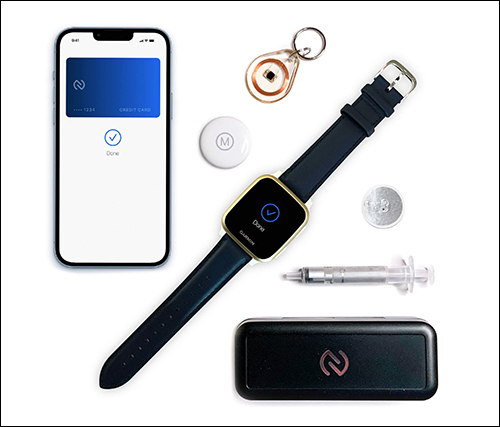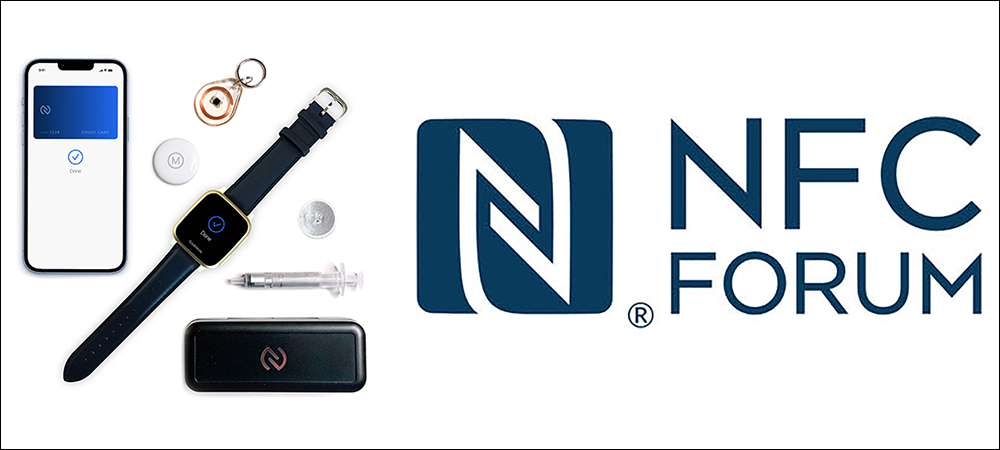- Aiding NFC Technology Development
- Making Payments the First Applications for NFC Wearables
- Demand for Standardized Development Approach
The NFC Forum has released a new device class aimed at an emerging focus for developers: Near Field Communication (NFC) functionality in wearable devices that do not require batteries. The new specification, known as the Card Emulation (CE) Device Class, will allow companies that make wearable devices like rings or bracelets to follow a standard testing protocol when creating NFC-enabled products for payments or other applications, without needing a power source.
The nonprofit industry association is focused on NFC technology advancement for mobile communications, semiconductor and consumer electronics companies. The organization created the CE Class within its existing NFC Mobile Device Class as a subset category for devices that do not require an NFC reader-writer mode, in which users would write data to tags. The CE Class is the seventh in the Forum’s specifications portfolio, which began with a universal device class for reading NFC tags via a smartphone.

The CE Device Class allows companies that make wearable devices like rings or bracelets to follow a standard testing protocol when creating NFC-enabled products.
Aiding NFC Technology Development
The wearable device application is of interest primarily to companies looking to bring contactless payment functionality to products that have limited power, such as smart watches or activity trackers, as well as wearable devices with no power source at all, but rather an NFC tag that can be interrogated by a reader. The NFC Forum’s device classes are intended to address the devices and applications for which NFC technology is being developed, says Mike McCamon, the organization’s executive director. Each class dictates the tests that are appropriate for a particular type of device before it can be commercially released.
For several years, some businesses have been developing card-emulation functionality into their consumer electronics devices, enabling wearables to act as a contactless payment card. The NFC tags built into such devices store unique ID numbers. When a tag is interrogated by an NFC reader at 13.56 MHz, compliant with the ISO 14443 standard, it can respond with its ID, linking it to an authorized payment account, to be accessed by the reader. However, companies have historically had to work without the testing guidance of the CE Class. The framework, McCamon explains, will help developers create NFC functionality that meets specific CE Class standards more easily and in a universal way.
Making Payments the First Applications for NFC Wearables
Smartphones already operate in card-emulation mode. Users can tap their phones to make payments via ApplePay or GooglePay, for instance. The payment terminal, as well as the phone, can then process the payment information, with the phone relying on its built-in battery. And with a smartphone, NFC functionality is also possible in reader mode, in which case the phone’s built-in NFC chip can interrogate a tag and then access server-based data.

Mike McCamon
When it comes to small wearables, however, the goal is simpler, the NFC Forum notes. Although a card-emulation device does not read tags, it can provide data wirelessly to a reader for multiple use cases. Payments are one of the early applications, but an individual’s NFC-enabled wearable could also provide an ID to a reader in a use case such as access control, for a building, home or car. Thus, by tapping a wearable against an NFC reader on a car or building lock, a user could be authorized entrance.
Such devices can be used in the hospitality sector. For instance, tourists on a cruise ship or at a resort or theme park could wear disposable wristbands. The bracelets would each include an NFC tag that would respond to interrogation by readers whenever payment or access authorization is needed. An individual would be able to leave their phone behind or keep it turned off.
The new device class was released, in part, because companies have been indicating a need for their own class as they build NFC into their wearables, McCamon says. “Two years ago, one of the winners of our innovation boards was a product called the NFC Ring,” he recalls. “The company did not benefit from the standardization that will make such development easier. The idea is that [developers] can look at this new specification, and if they intend to modify their product with NFC, the path to market success would be easier for them.”
Demand for Standardized Development Approach
In the long term, McCamon sees applications including multiple functions with a single device. Until now, he explains, NFC development has largely centered around powered devices such as smartphones. One benefit to adding NFC in wearable devices, without requiring power, is the technology’s ubiquity. For those who typically use their smartphone’s NFC functionality to open car doors, the CE Class offers a second option.
“If my phone is dead,” McCamon says, “or if the phone isn’t powered on, I still want to be able to get into my car,” using a wristband, ring or bracelet. “I’ve always been interested in innovations that allow us to stay disconnected while getting more connected.” Down the road, McCamon adds, wearable devices could include smart glasses and smart clothing, and he speculates that CE devices with NFC might include medical bracelets that store an individual’s vital medical information.
For people who cannot afford expensive watches or other smart devices, the technology class could enable new products that users could wear and present as an ID or payment card. The CE Class could be applicable to non-mobile devices that interact with smartphones. For instance, a passive door lock could come with an NFC tag built in, and users could power that lock by reading its tag with their smartphone. In that way, the lock would not require power or Internet connectivity.
Developers would typically download the core specification for their device, then determine how to build their product and seek certification by using a test plan generation (TPG) tool. Now, McCamon says, that TPG will include the CE Class among the device classes from which users select, guiding developers and labs through the appropriate testing. The NFC Forum expects to release more device classes for other emerging applications and device development going forward, and access control and wireless charging may be on the roadmap.
Key Takeaways:
- Developers are building NFC functionality into wearables and other devices that may have power limitations.
- Payment-enabled devices, such as rings or bracelets, will be among the early solutions leveraging the NFC Forum’s CE Class.


